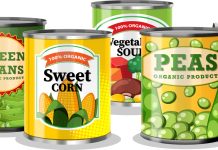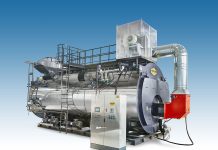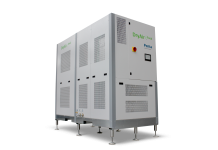
HPP treatment provides instant and uniform pasteurizing of heat-sensitive foods while still preserving organoleptic qualities. Currently used on high end refrigerated products with long shelf life or health requirements, like RTE, cold cuts, ready meals, juices, smoothies, and milk or fish based products, HPP may also provide answers for future applications.
Where food is concerned, modern consumer requirements can be reduced down to two concepts: safety and freshness. The latter implies that the food products, even those industrially processed, preserve their nutritional value despite the processing, and that they do not contain additives or preservatives. High pressure processing (HPP) appears to fully meet these needs. This process, in fact, preserves the food, rendering it hygienically safe, without altering the natural aspect and safeguarding organoleptic characteristics like smell, colour, consistency, taste, and even nutritional content. HHP is already widely in use in many countries like the U.S., Japan and Australia where it is used in many food industry applications. Even in Europe this process is arousing particular interest in the food industry because of the many opportunities that it opens up. We interviewed Pierpaolo Rovere, Company Support and Assistance at the Food and Agricultural Park of San Daniele in Friuli, and asked him about HPP and its applications both today and in the future.
What does HPP treatment consist of?
HPP or High Pressure Processing means subjecting food to hydrostatic pressure levels on the order of 4000-6000 Bar or 400-600 Mega Pascal. The process is usually performed on food products pre-packaged in flexible containers, which are placed in a special autoclave or press where the indirect compression takes place through water. The pressurization of the water and hence the product immersed in it, involves the use of pumps or high pressure intensifiers. In the past, prototypes of continuous systems were developed based upon the principal of the 4-stroke internal combustion engine but these systems were never used in the end. There are also high pressure homogenizing systems but these have rheological effects on the products because of the mechanical impact of the homogenizing valves and they are not generally isostatic.

How does HPP work?
It’s a simple process in a way. As I mentioned, food products that are already packaged in flexible containers, are placed in autoclaves that are called cold isostatic presses (a term that has been borrowed from the metal processing industry). The packaging must be able to resist the isostatic compression of the product and the gasses that are present inside. Isostatic means that the product inside its packaging container generates a uniform pressure according to Pascal’s principle, resulting in a reduction in volume but not a flattening of the product, like that which would take place with a uniaxial press. In fact, foods containing at least some water and little gas remain structurally integral. Once the autoclave is closed, it is filled with water that then becomes pressurized through a system of pumps and pressure multipliers. The water indirectly compresses the product by transferring the pressure. In this phase, the temperature increase is very limited and on the order of 15-20°C. After the exposure period is over, the pressure is quickly lowered, the water that was added to the press is expelled and then the press can be opened and the products unloaded. As the pressure is released, the temperature immediately drops back to the initial level. The process, in fourth generation machines, involves a net exposure time of around 4 to 5 minutes.




I am interested in getting regular feed back on new developments in food processing industries
Comments are closed.